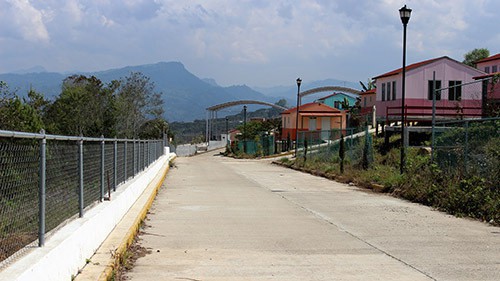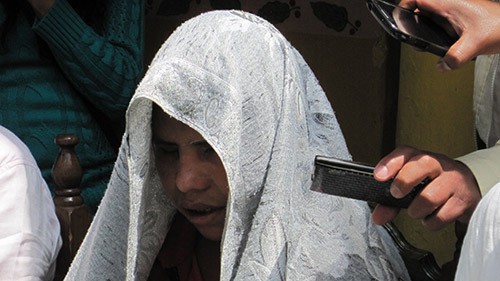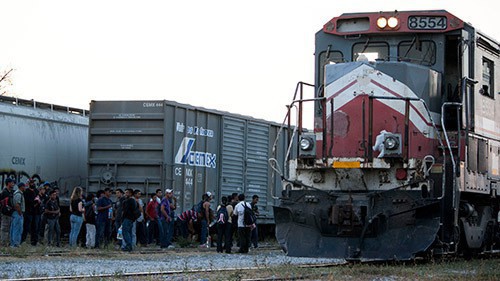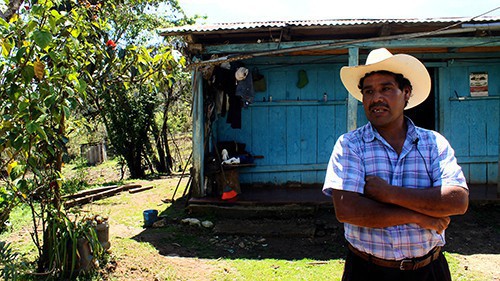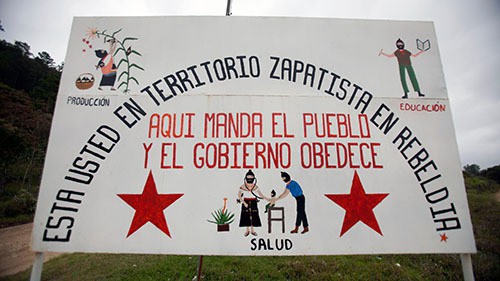
In southern Mexico, an invasion, a battle and a vision for the future
By Connor Radnovich / Cronkite Borderlands Project
Published Sept. 25, 2014
SAN CRISTÓBAL DE LAS CASAS, Chiapas, Mexico – A telephone call from a terrified voice woke Virgil Edwards in the middle of the night. From his New York City apartment, he heard the sounds of children crying and chaos nearly 2,000 miles away.
“They came in, they are burning everything. They are very aggressive,” the man on the phone shouted in Spanish.
It was midnight on Oct. 5, 2012, and the call was from a worker on Rancho El Ar, the land Edwards’ family owns on the outskirts of this picturesque colonial city in Mexico’s southernmost state of Chiapas.
More than 600 indigenous people armed with sharpened sticks and machetes had broken through the ranch’s flimsy wood-plank eastern fence and were threatening the families with whom Edwards had worked and grown up. The invaders said they were claiming the land as their own, one of the more recent examples of a decades long land battle between the haves and the have-nots in Mexico.
Edwards told his friend to be strong, stay safe and not put himself or his family in any more danger than they were in already.
The call lasted less than 10 minutes. Edwards’ girlfriend was awake now, and the two on the Upper West Side of Manhattan and the family in Chiapas all were crying. Edwards would then call his mother in Arizona and half-brother in North Carolina, and more tears would flow. He wouldn’t sleep the rest of the night, and just hours later he got on a plane headed for the chaos.
The invasion lasted nearly three months and turned violent. The families tending the land for Edwards weren’t harmed, but two police officers were killed while trying to break up the invasion. Eventually, 1,500 Mexican troops were dispatched to return the land to its rightful owners, but not before the land was burned, covered in trash and had more than 1,000 trees reduced to stumps.
Edwards could have bailed, returned to his life in New York. But he is a fighter – a “fierce warrior,” said his half-brother, Lee Edwards.
Virgil Edwards chose to rebuild the 25 acres that his American parents – his artist mother and record producer father – bought 50 years ago when there was no urban development in sight. Now the city has surrounded him – new houses are packed side-by-side to the east, and homes replace trees daily on the hill to the north. As one of the last large plots of open space in the city, he could sell it for millions.
Instead, he has a vision of turning his land into a beacon of living responsibly with nature. Ask him about his plans, and he’ll talk on end about the benefits of organic farming and greenhouses, the promise of aquaponics and his hope to use his land as a tool for teaching students.
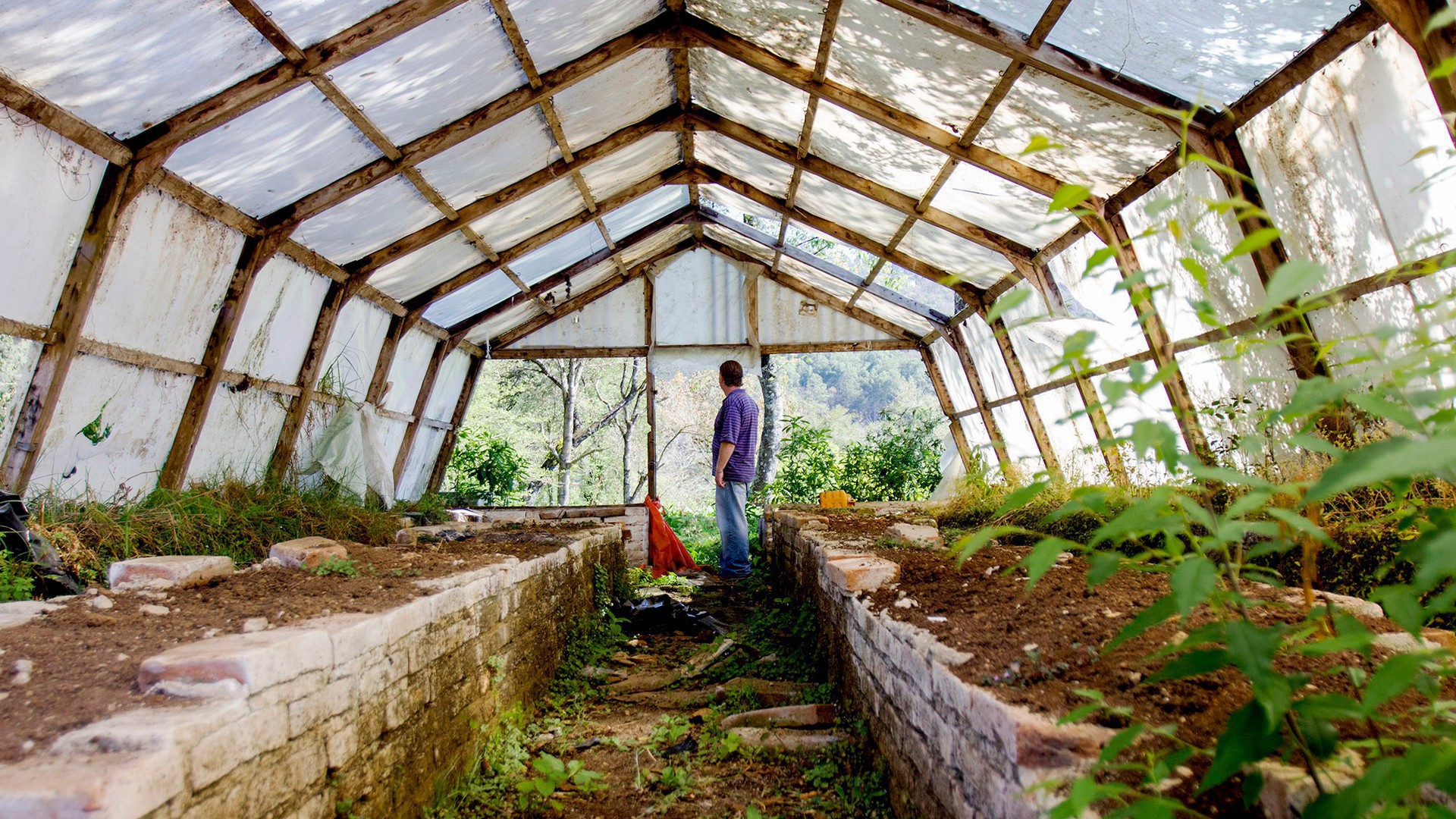
He points to a neighboring plot of land as an example of what’s wrong with farming in Chiapas. Each day, more than a dozen people are working the land, spraying chemicals and watering. On this March day, the land is empty and brown, compared to the grasses that grow easily on Edwards’ land.
It was on his brother’s and mother’s dime that Edwards flew to Chiapas the day after he received the call about the invasion. He was scheduled to visit a couple weeks from that night, but he knew time was critical and not on his side. The situation was dangerous. Lee and Virgil Edwards said they didn’t know whom to trust.
“Am I writing the check to watch my brother get murdered?” Lee Edwards recalls thinking at the time.
When he arrived in San Cristóbal, Virgil Edwards stayed hidden, living with a close friend and only going outdoors to file reports with the government and police. He began working with people from the Mexico and U.S. governments and contacting friends who could help him pull strings. There was a lot that went into him getting his land back, but Edwards credits his quick relocation to Chiapas from New York as a major reason.
He now lives on his ranch full-time, costing him, at least for the moment, his relationship with his girlfriend.
“She’s mad at me right now for being here … I hope to work it out,” he said.
Trees make up much of what Edwards does on a daily basis now. He can identify a tree by the stump that remains after the rest was chopped down with machetes for firewood. He runs his hand along the slash marks in trees too strong to be cut down but which now have fungus growing in the blade wounds. Almost every day he prunes up to 10 trees, and he has a goal of planting 1,500 trees to make up for the ones he lost – some of them decades old.
On this day it takes Edwards about two hours to prune six trees. The 43-year-old’s normally slicked-back red hair falls down into his face as he saws at the branches. He’s about 6 feet tall, big and strong. When he’s finished, his eyes are bloodshot from the sawdust, which makes his light blue eyes stand out even more.

Edwards does the vast majority of this work on his own. The families who were on his land before the invasion fled and have not returned for fear of retribution. What remain of their lives at Rancho El Ar are burned-out homes without roofs, homes full of trash and a child’s drawings on the walls.
There is only one person who came back after the invasion to join Edwards. Edwards said he has worked for the family forever and can’t do much to help around; he only came back because he had nowhere else to go.
Reasons people prescribe for the invasion differ — some say it was the people reclaiming land that is rightfully theirs, while Edwards suggests greed and corruption. The roots of the fight over land in Mexico go back to the 1500s.
The struggle began when conquistadors from Spain conquered Mexico and gave vast swaths of land to a small number of people. That land remained in the hands of a few for the better part of 400 years.
The first substantive agrarian land reform movement took place following an uprising led by folk hero Emiliano Zapata, who in 1911 unveiled his Plan de Ayala that declared that sections of large land grants should be given to poor farmers. The movement stalled with Zapata’s assassination in 1919. President Lazaro Cardenas, Mexico’s leader from 1934-1940, aggressively took up the agrarian reform banner during his term, redistributing large amounts of land to landless farmers. But those reforms didn’t solve the problem and land disputes exist to this day, said Erik Lee, executive director of the North American Research Partnership.
Land invasions, similar to what happened at Rancho El Ar, are widespread in Mexico. A dearth of land suitable for living and farming, income, class and ethnic inequalities and political instability are reasons for the ongoing battle over land, Lee said.
“Historically speaking, land disputes are quite common in Mexico,” he said. “So (current disputes) are just continuations of a history of issues surrounding land.”
Lee said that people who want land often choose invading a plot and living on it as opposed to getting the land through legal proceedings (if they have a claim on the land) because the legal system in Mexico is “deficient” in many areas. This works two ways. Not only does it make getting land you have a claim on more difficult, but it also makes removing people from your land more challenging and time-consuming.
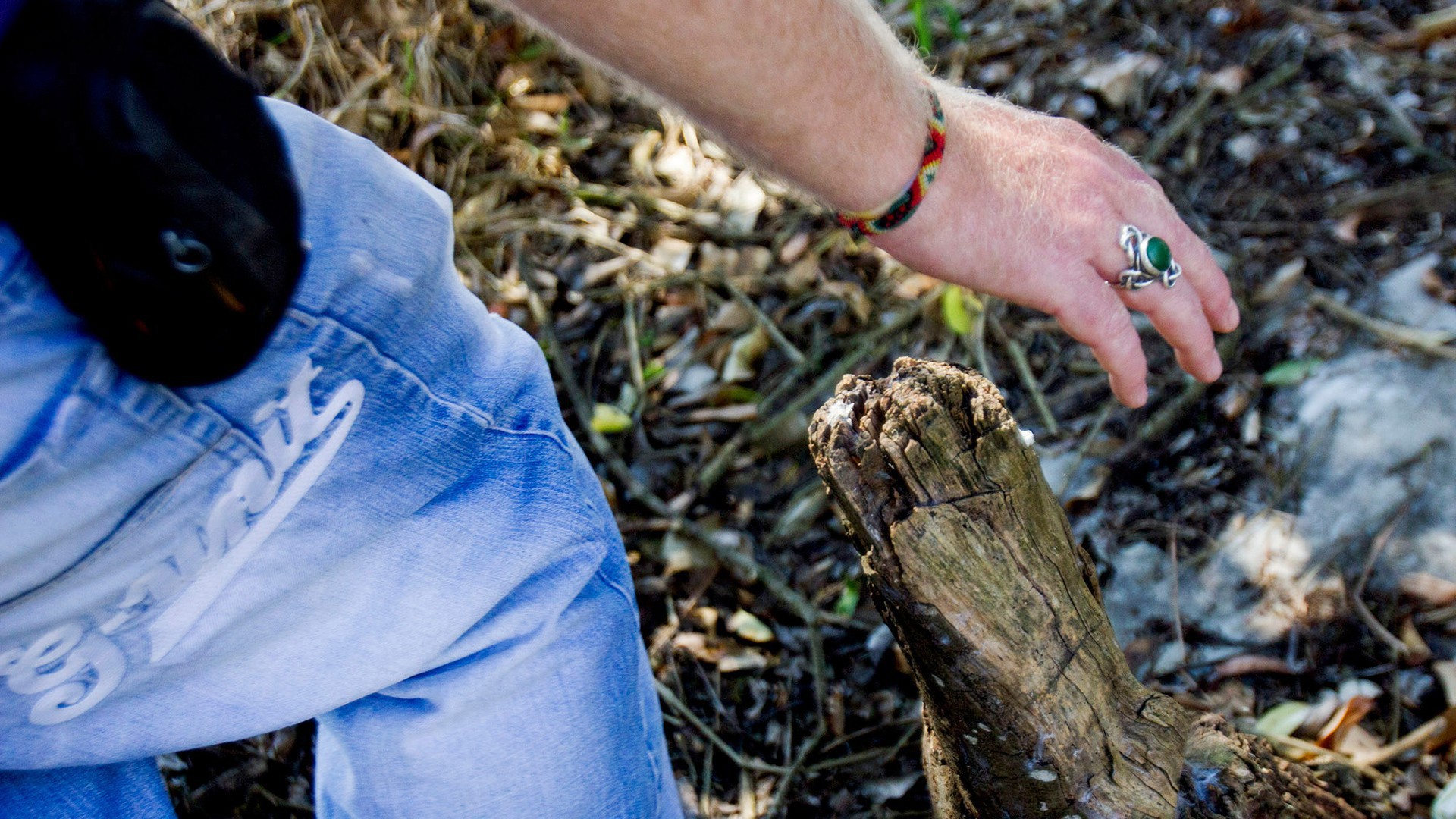
“The legal process for these things can take years to get these people evicted,” Lee said.
A common practice in these situations is mediation, Edwards said. The two parties involved in a dispute discuss ways to resolve the situation, which often involves money-changing hands.
A few days after the invasion of Rancho El Ar, Edwards received a call from one of the invaders. The call came from the cellphone of the man who first called Edwards about the invasion. The man on the other end of the line didn’t introduce himself but Edwards later would believe he was speaking with one of the two leaders of the invasion.
Edwards said the man started discussing ways Edwards could sell the land and that it was his only option. Edwards cut him off.
“I told him, ‘Get off my land and don’t call me again,’” Edwards said.
It was a brash response from a man who exemplifies Latin America’s “macho” culture.
In New York, Edwards was a member of Empire Skate Club’s Tuesday Night Skate Group, a handful of people who spend one night a week rollerblading through New York City traffic as fast as they can.
In San Cristóbal, he tells a story of walking through a crowd of rioters on his way home, calmly wishing them “buenas noches” as they shout at him. He received death threats after the indigenous people were removed from his land, and he posted a few of the anonymous messages to his Facebook page.
The last year and a half Edwards has spent planning and cleaning. He’s planted several hundred trees and grasses, many of them along the eastern fence the invaders broke through to take over the land. There, he is building a “living fence” of thick trees and shrubbery with inch-long spines or razor-sharp leaves on each plant.
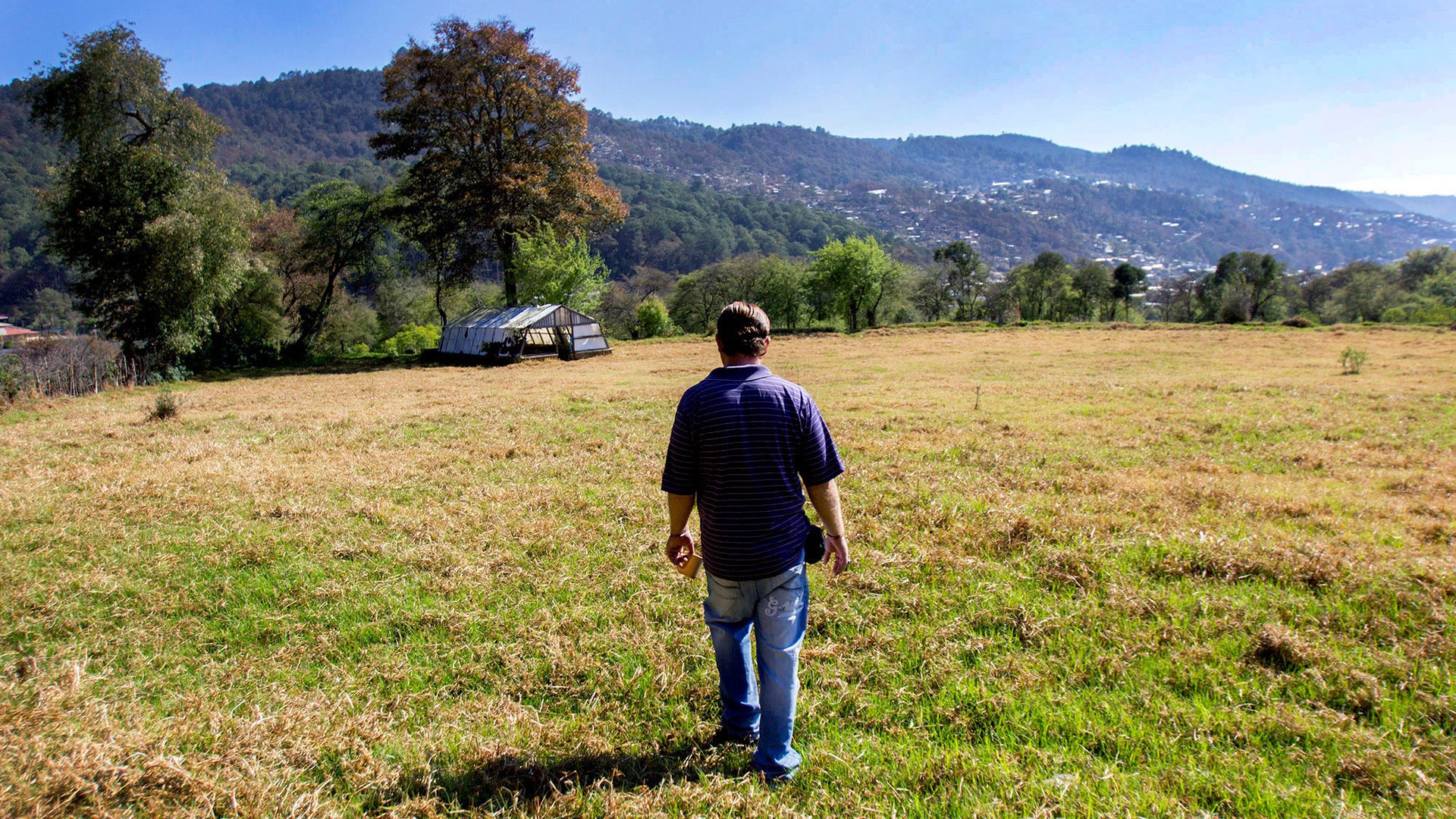
He has also thrown away more than six tons of garbage.
But the signs of the devastation still exist.
In a concrete-block home, burn marks around the tops of the walls mark the missing wooden roof. Dry leaves lay strewn across the faded-red floor and an old, long-unused spring mattress rests askew in the main room.
On a brick in what used to be a bedroom is a poem in orange crayon written by a little girl who used to live here:
Here the sacrifice, the effort
The work of all of one’s life
God bless whoever
Lives in this home
That was full of love, smiles and peace
“I will never take that off no matter who lives here,” Edwards said.
He rubs his eyes and then smells the white rose he picked moments before. Walking back to his home, tree stumps sit where fruit trees used to bloom, occasional empty soda bottles litter the landscape and a century-old barn lies in pieces on its foundation. Trash and bathroom pits remain open next to a spring that will flow with water in the rainy season.
But as Edwards looks over the land and sees how much was taken, he also has a vision of what it could all become.
He wants to experiment with different kinds of farming, like pairing fish and plants in a symbiotic and easy-to-manage process that, studies have shown, can produce three times the amount of food while using less land and water. He wants to rebuild the greenhouses that now lay in tatters of plastic and wood, greenhouses he said his mother was the first to bring to Chiapas 50 years ago.
His plans include partnering with the community to bring children to the ranch and teach them about working with land instead of using it up.
Edwards recently partnered with Pedro Meza, a former municipal president of Tenejapa, a city of 33,000 17 miles east of San Cristóbal populated largely by Mayan descendants of the Tzeltal tribe. Edwards hopes that Meza can help get community support and financing for his dream. He points a successful project led by Meza that incorporates ideas that he envisions for Rancho El Ar.
Meza’s current project involves eight greenhouses that are now turning a profit so much so that they can employ up to 20 people earning 120 pesos a day, two or three times the region’s normal labor rate.
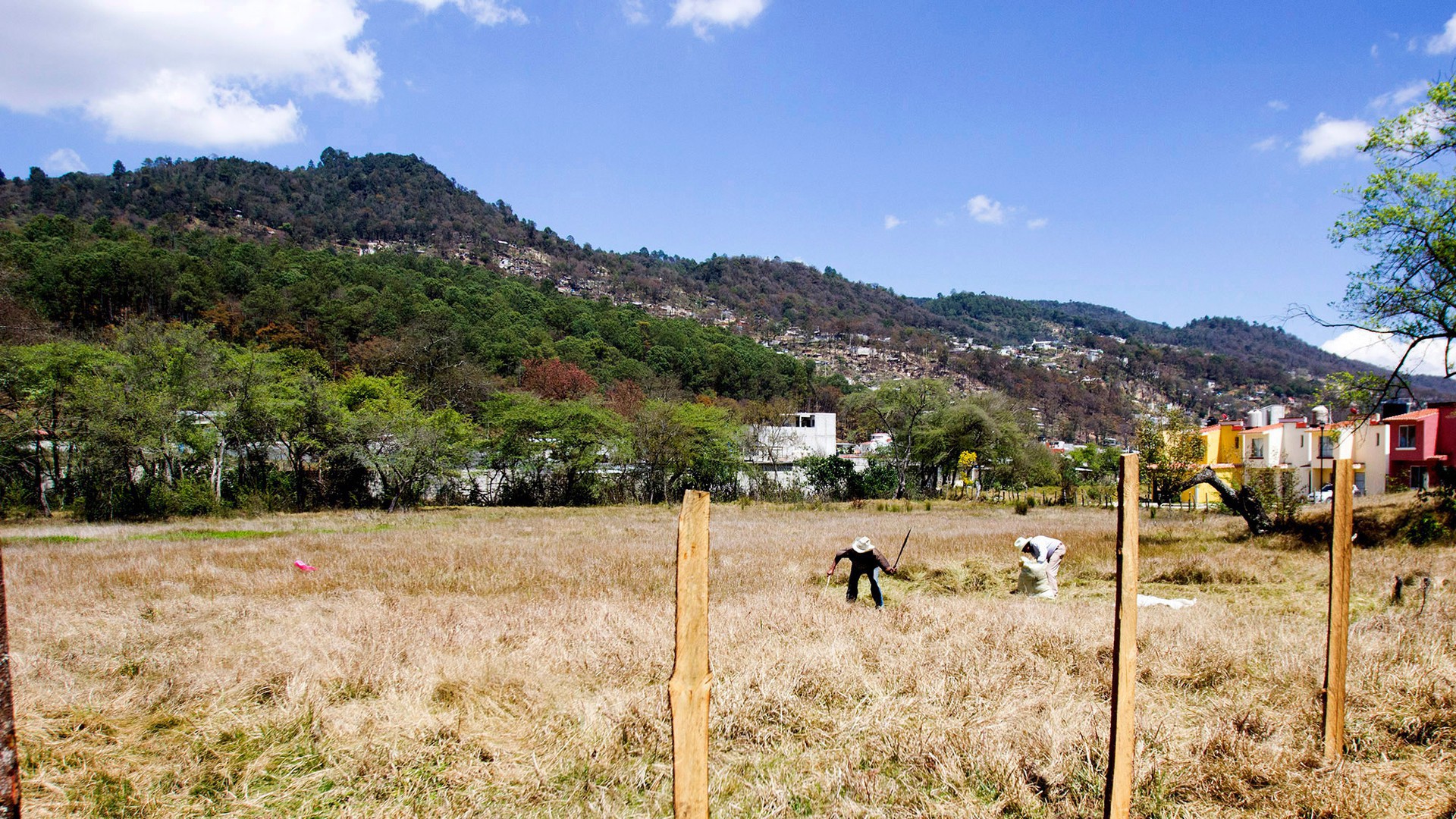
“We share visions. We have many common ideas,” Meza said. “Above all we believe that indigenous people, people from rural areas have to have other means of development, not paternalism.”
The problem is that neither Meza nor Edwards know how they’re going to pay for the project until it becomes self-sustainable. Meza estimated it would take two or three years to get off the ground. In the meantime, Edwards doesn’t have any income, which has caused some tension between him and the other owner of Rancho El Ar: his half-brother.
In many ways, Lee and Virgil Edwards could not be any more different.
Lee Edwards is a family man: cautious, conservative and pragmatic. He doesn’t share Virgil’s passion for the land. He remembers playing as a child in Chiapas fondly, but to him the land is a memory and not a place for the future.
Farming is a lot of work without much reward, he said. He’s not opposed to the idea, but he isn’t actively going to help it become a reality. He views the land as an asset, and he and Virgil have had more than a few fights about what to do in the future.
Virgil is committed to living there full-time, and Lee is not. Lee hasn’t been back to the land in more than three years, and while he plans to go back sometime this year, he hasn’t set a date.
Lee said he wouldn’t sell his portion of the land while Virgil is still trying to develop his vision, but he didn’t rule it out as a long-term plan.
In part, he attributes the differences to the amount of time they spent in Chiapas full-time. Virgil is four years older than Lee, so he has more memories of Rancho El Ar. They both moved to Tucson, Arizona, for school when Lee was about to start first grade, coming back to Chiapas every three to six months.
But there were memories they did share. Many of them got destroyed during the invasion – pictures, artwork, musical instruments, whole builds and more burned.
“Your memories and your childhood were being erased, in a way,” Lee Edwards said.
He now lives in the Raleigh-Durham region in North Carolina, working for HCL Technologies. He runs a large service desk for Deutsche Bank. The 39-year-old has two sons and an 18-month-old granddaughter.
“I know the realities of life, and we almost lost the land once,” Lee Edwards said. “There’s no amount of property anywhere in the world that’s worth losing your life over.”

Despite Lee and Virgil not seeing eye-to-eye on the land, Lee did help his brother get the land back. Not only did he help pay for Virgil’s last-minute flight to Chiapas, he also succeeded in getting an indigenous tribe on their side.
Lee’s father is the former leader of Zinacantan, a Mayan village outside San Cristóbal de las Casas. Lee called him, asking him to come out in support of Virgil and Lee getting the land back.
“I’ve never asked you for anything in my life,” Lee Edwards remembered saying. “But I need to ask you for something now.”
His father agreed, and Zinacantan decreed that anyone involved in the invasion from Zinacantan would have their lands stripped from them.
Myths about the land also helped. One story is that President Barack Obama personally called Mexico’s President Enrique Peña Nieto to help Virgil get his land back. Others overestimated how much sway Edwards had within the Mexican government.
While these stories aren’t true, Edwards has found that it is better to go along with the tales because they probably helped in the end.
As the three-month incursion continued, public support swayed in favor of Edwards while people from outside Chiapas supported the invaders. Edwards said that on the Facebook page he created to help spread news about the invasion people from Europe in particular were commenting that he should give up the land. Edwards recalled posts telling him the land belonged to the indigenous people to begin with and that it was more just for them to have it.
Locally, the rhetoric was far different. Edwards and others gathered more than 26,000 signatures on a letter they sent to the federal government asking for the law to be applied and for the invaders to be removed.
They read the letter during a rally in late October 2012 at which thousands marched through the streets of San Cristóbal de las Casas wearing white to support Edwards’ fight. Edwards said it was the first time the poor and the rich in Chiapas came together as one voice.
“The beautiful thing about this is the society banded together and said, ‘No,’” Edwards said.
The people who live near Rancho El Ar were just as worried about what would happen to the land as what could happen to them later if the invasion was successful.
Luis Sanchez, a neighbor of Edwards, said he had 30 family members that rotated standing armed guard in case the invaders decided to expand.
“We were prepared for whatever was going to happen because you never know,” Sanchez said. “Before they get us, better to get it to them, to protect ourselves.”
The authorities tried twice to reclaim Rancho El Ar. The first time, a few hundred state police officers came to take the land but were repelled by the invaders. According to reports, two officers were killed and six injured in the fight. A video posted online by the invaders shows the officers lying on the ground unconscious surrounded by dozens of people with sharpened sticks and machetes. The officers appeared to have injuries including severe internal bleeding, gashes to the face and broken bones.
The second time authorities were more prepared. Around 1,500 federal police took the land in early December, supported by two helicopters – a rare sight in Chiapas. Reports said the helicopters tossed tear gas onto the invaders and that many fled to avoid police. Some ran to the nearby Zinacantán and were captured, beaten and taken to police from there, Edwards said.
It was reported nearly 60 people were taken to jail, including one leader of the invasion, while the other remains in hiding.
“In the end I do not believe anybody would have stayed here who was invading,” Edwards said. “They wanted to put some Sam’s Club or Wal-Mart.”
Virgil and Lee Edwards could understand why the invaders wanted to take over their land. The brothers say it’s magical. Birds chirp high in the old, twisting trees that border one of the creeks babbling through the land. Horses stand still in the fields and four dogs run about, following Edwards as he meanders across the fields.
Edwards lives in one of the buildings that wasn’t destroyed – what remains of the studio where his mother and father recorded indigenous music in Chiapas. He cooks in a different home, where half of the house was burned down and scorch marks stain the ceiling.
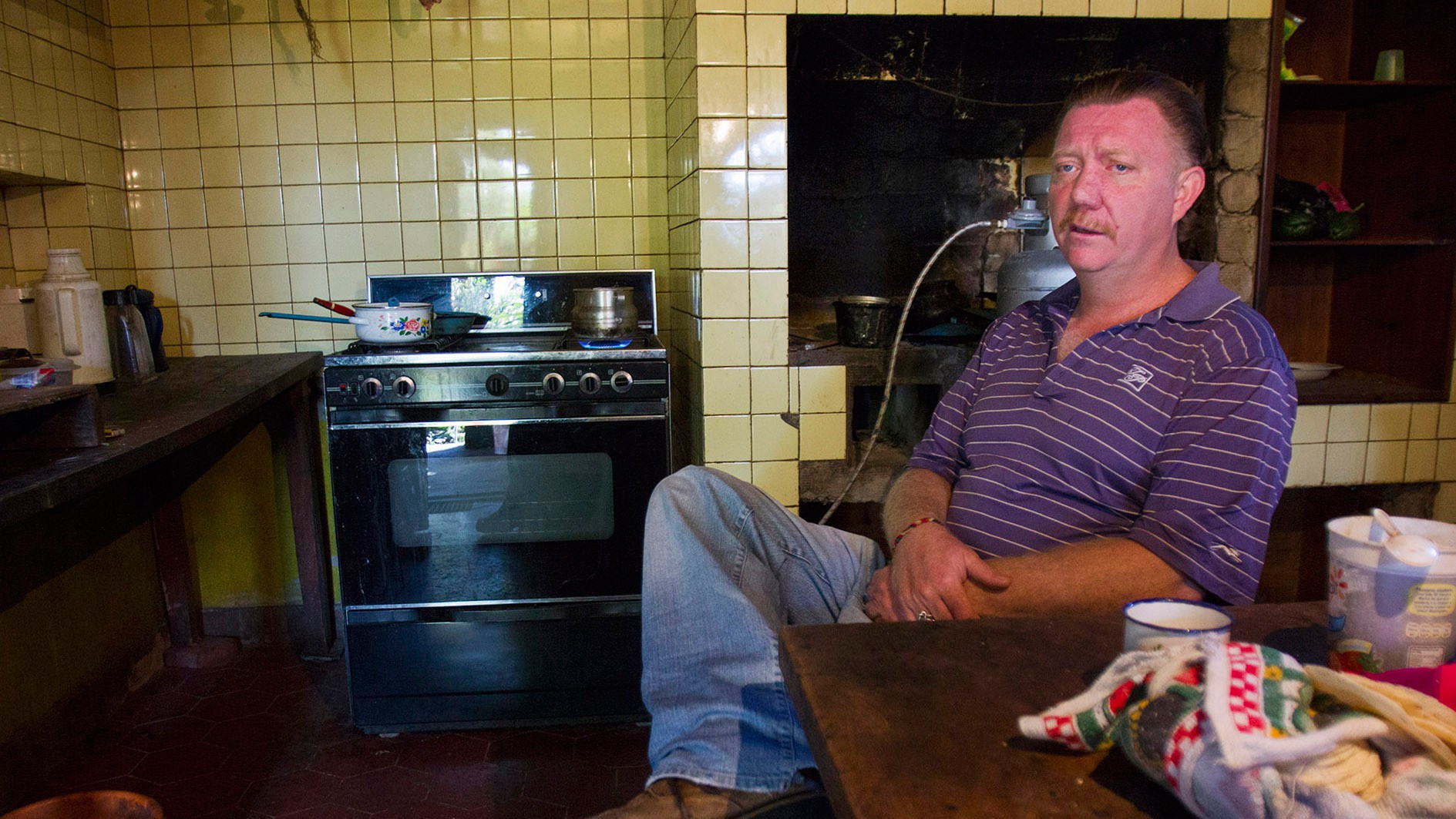
The bedroom in his home is a long room with a bathroom attached, and in the middle of the room near the bed is a desk and laptop where Edwards does some contract IT work that carried over from his time in New York (before moving to Rancho El Ar full-time, Edwards worked in IT support for the better part of two decades). Shelves on each side of the room hold some pictures of his family, and a few drums are piled in the corner. On top of one of the shelves sleeps a cat and a weeks-old kitten that hasn’t yet opened its eyes.
Next to the head of his king-sized bed rests a 4-foot machete.
Edwards doesn’t know how long he will spend in Chiapas working on his vision. There are rumblings that the remnants of the group may try to take back the land, but Edwards thinks he is safe for now.
The invaders who were detained have entered the legal system, and as part of that Edwards must travel to courtrooms and jails to meet with them face to face. At these meetings, the accused try to prove that they weren’t among those who invaded, while Edwards, using media reports and the police investigation, tries to prove they were. So far, Edwards has gone to six of these meetings.
He has decided to do all of this without a lawyer – or a bodyguard.
Despite the never-ending work, the threats and the uncertain future, Edwards said he has made peace with the invasion of Rancho El Ar. It’s given him a chance to build on his memories and plot a future for the land he loves.
“They came in and made a beautiful piece of land look like hell,” Edwards said. “I want to create an example of showing what people can do with the land.”

